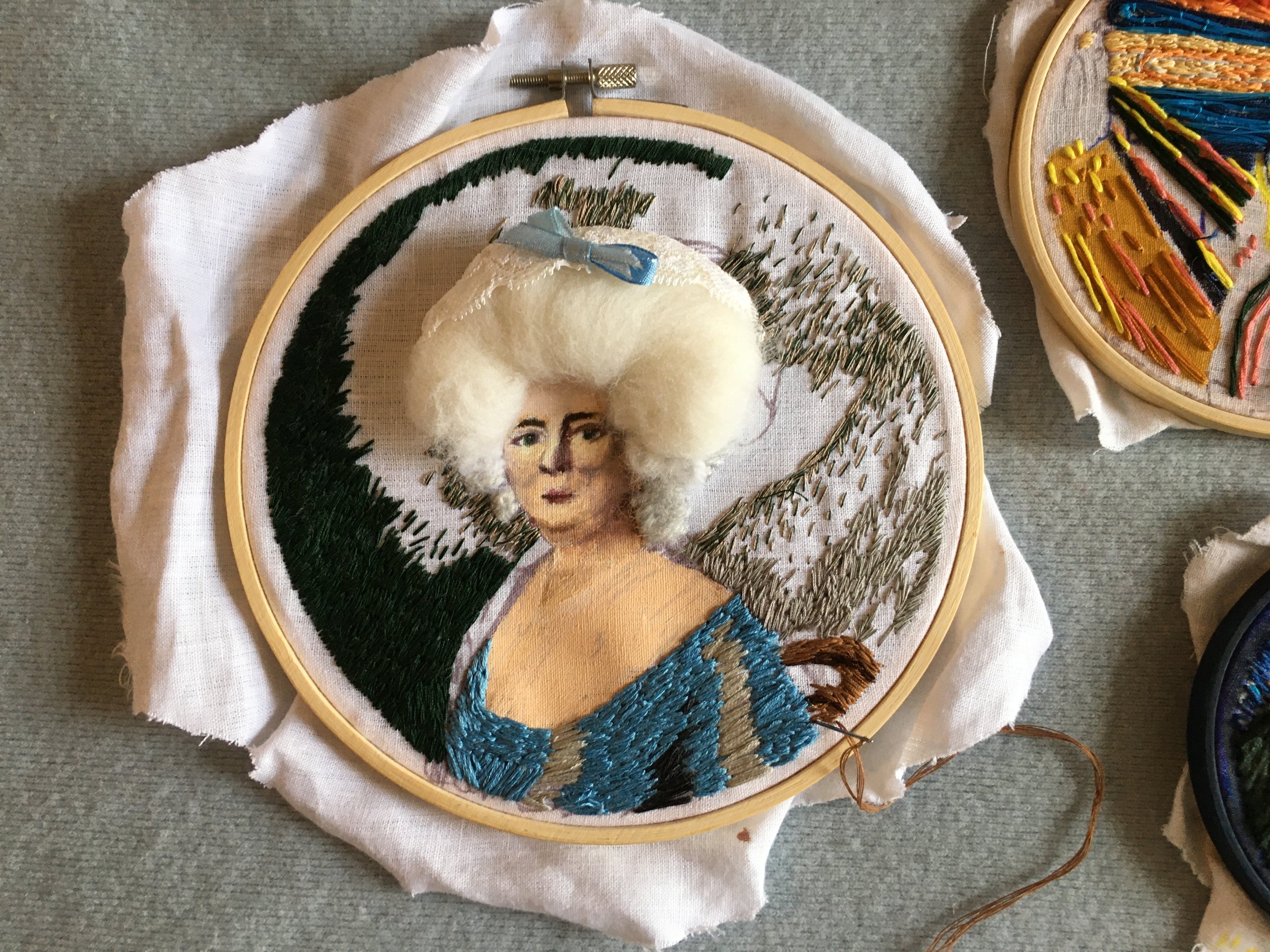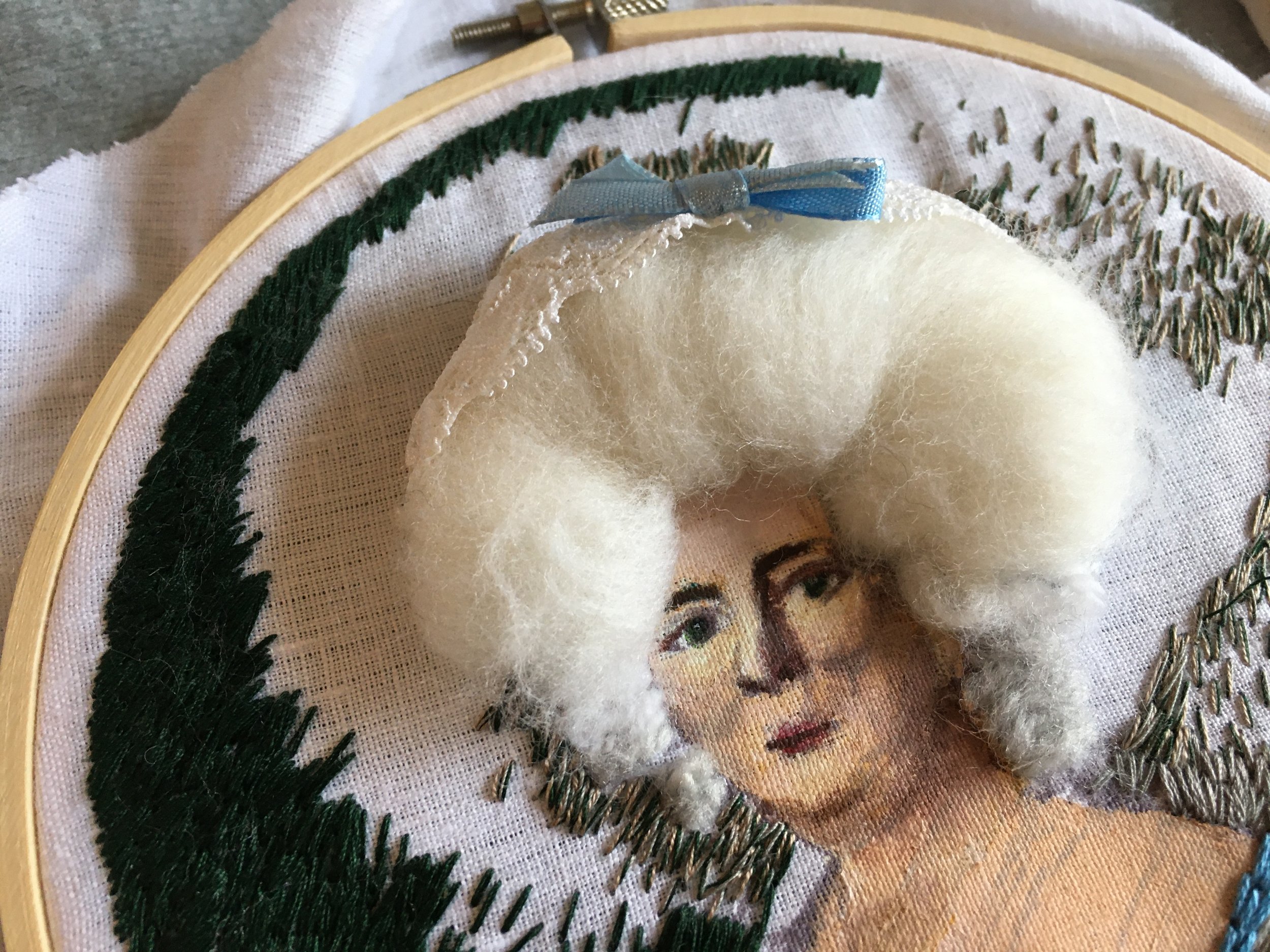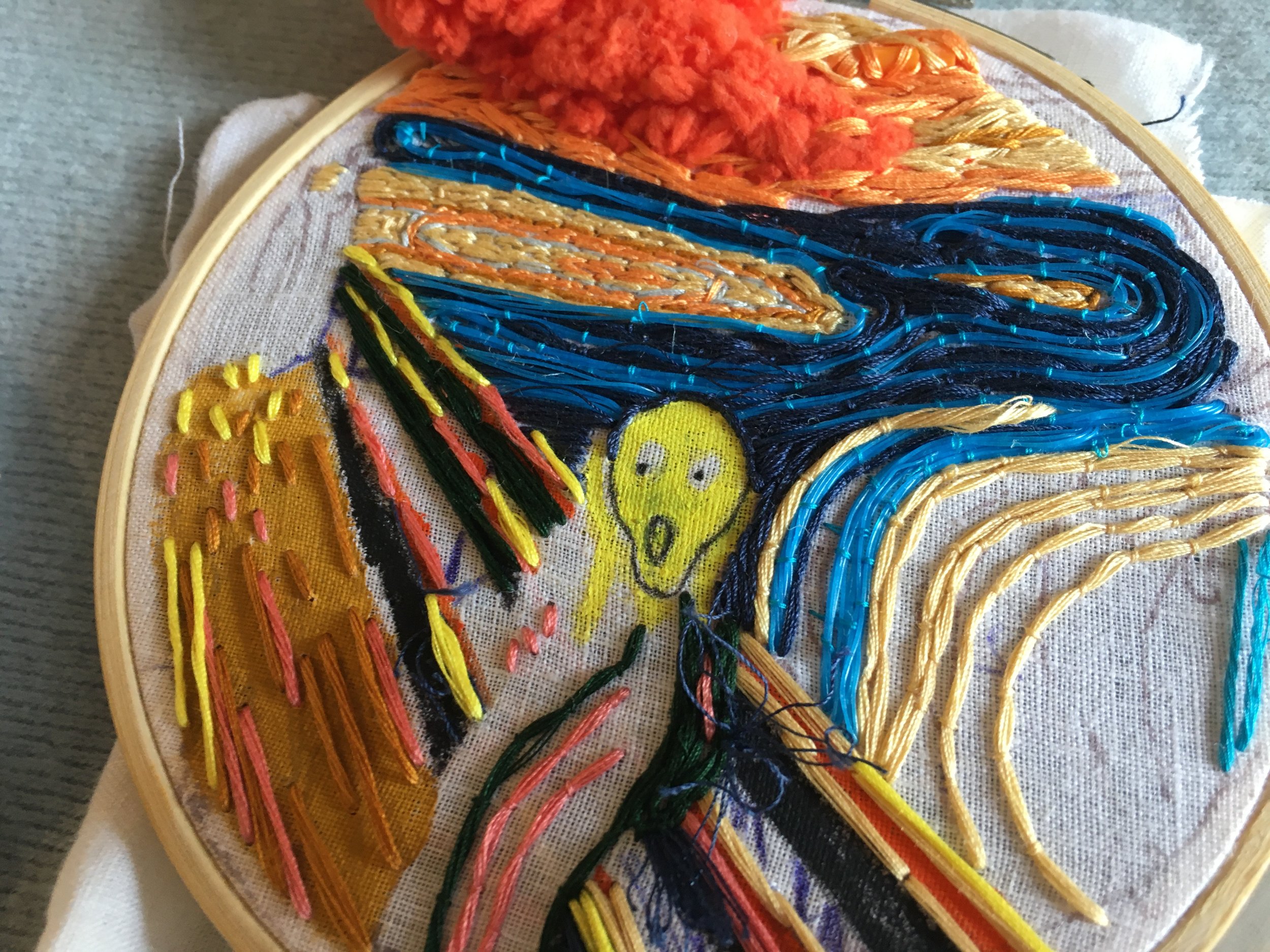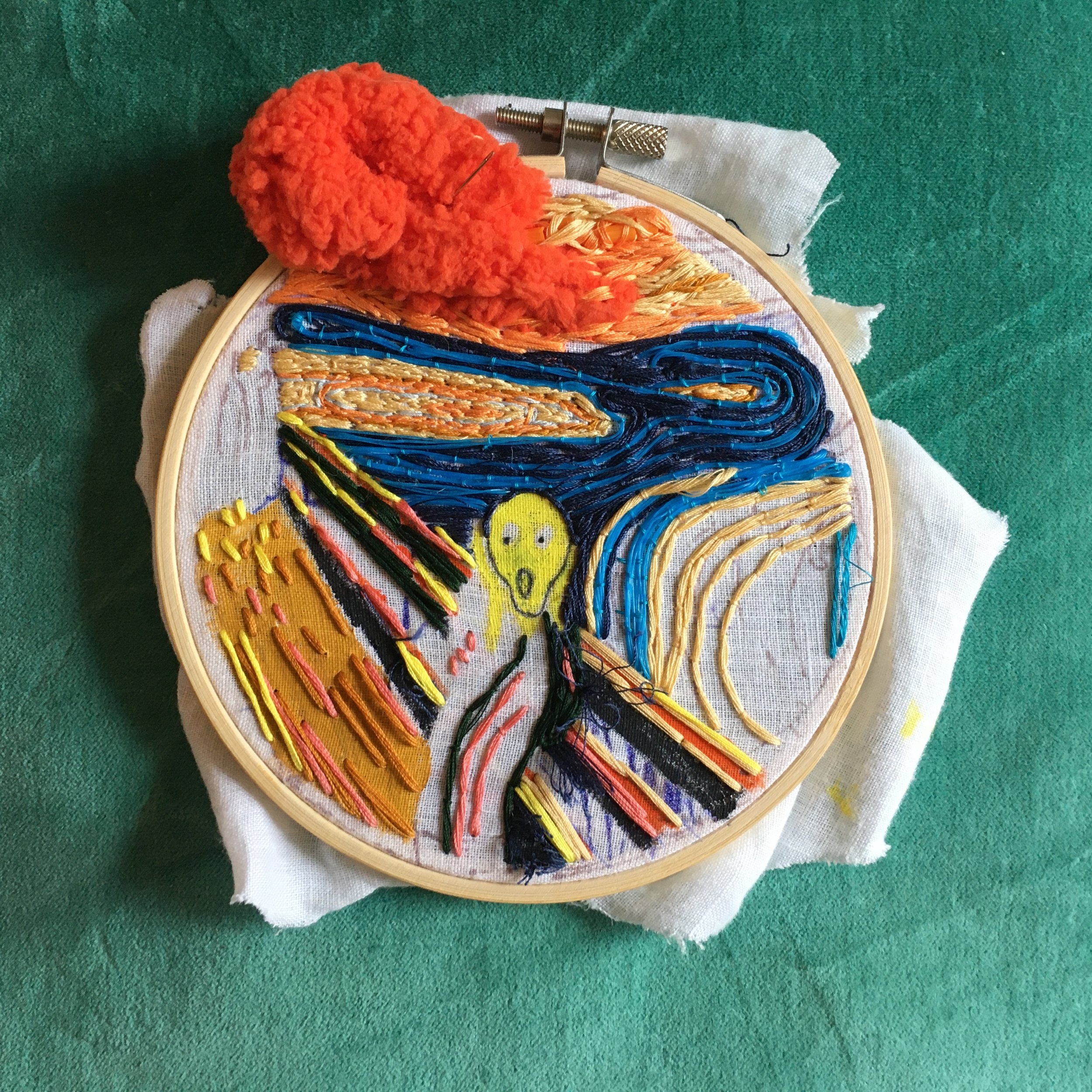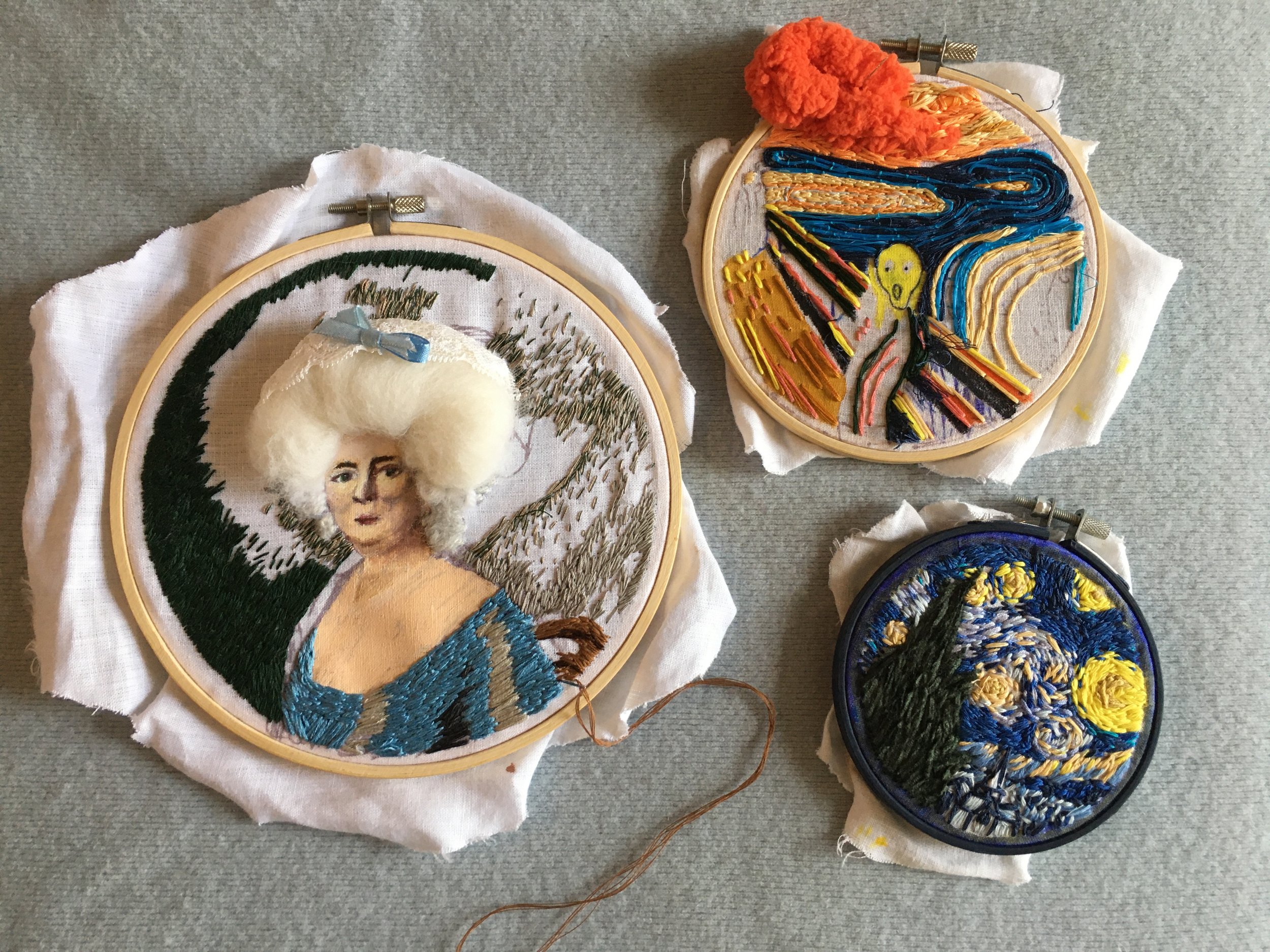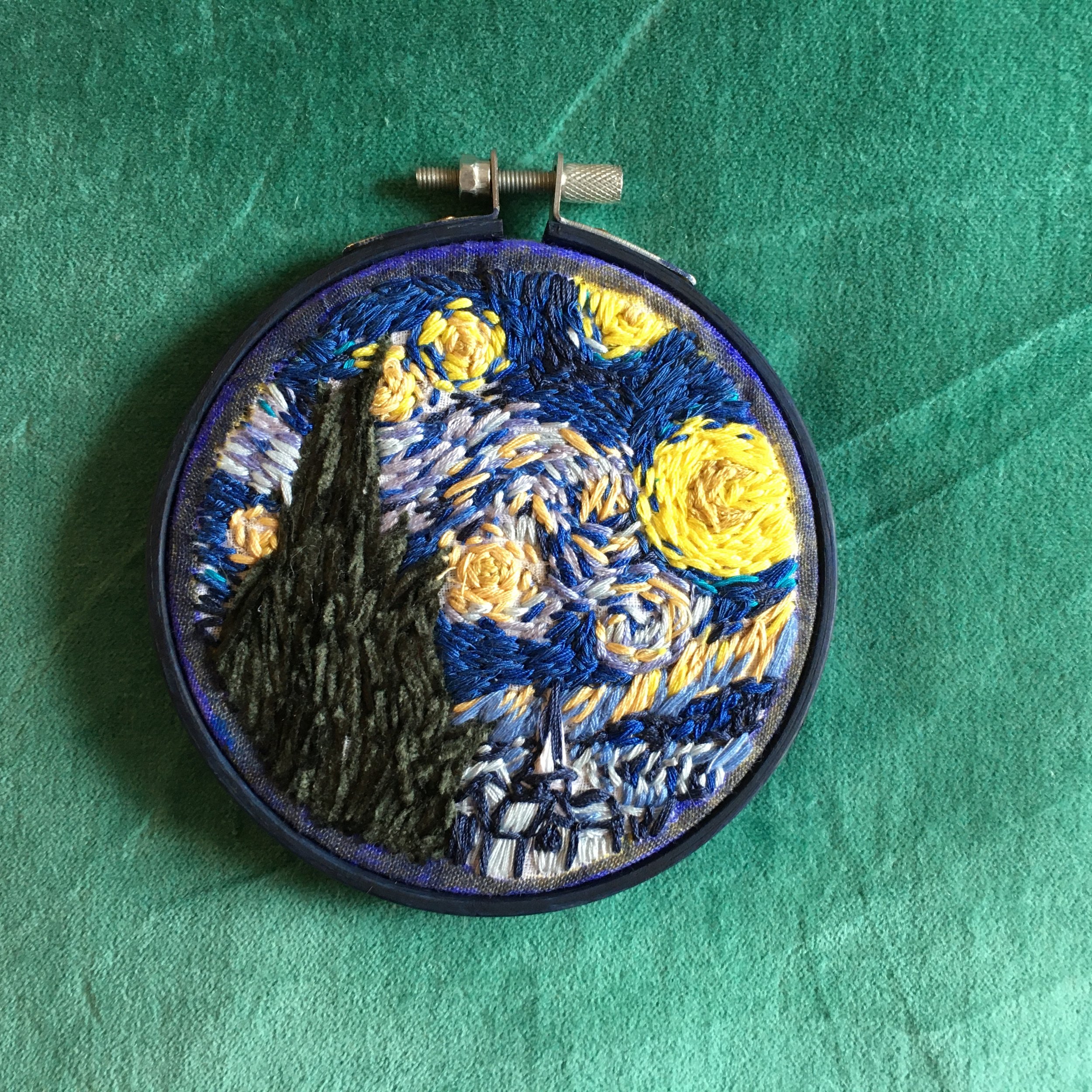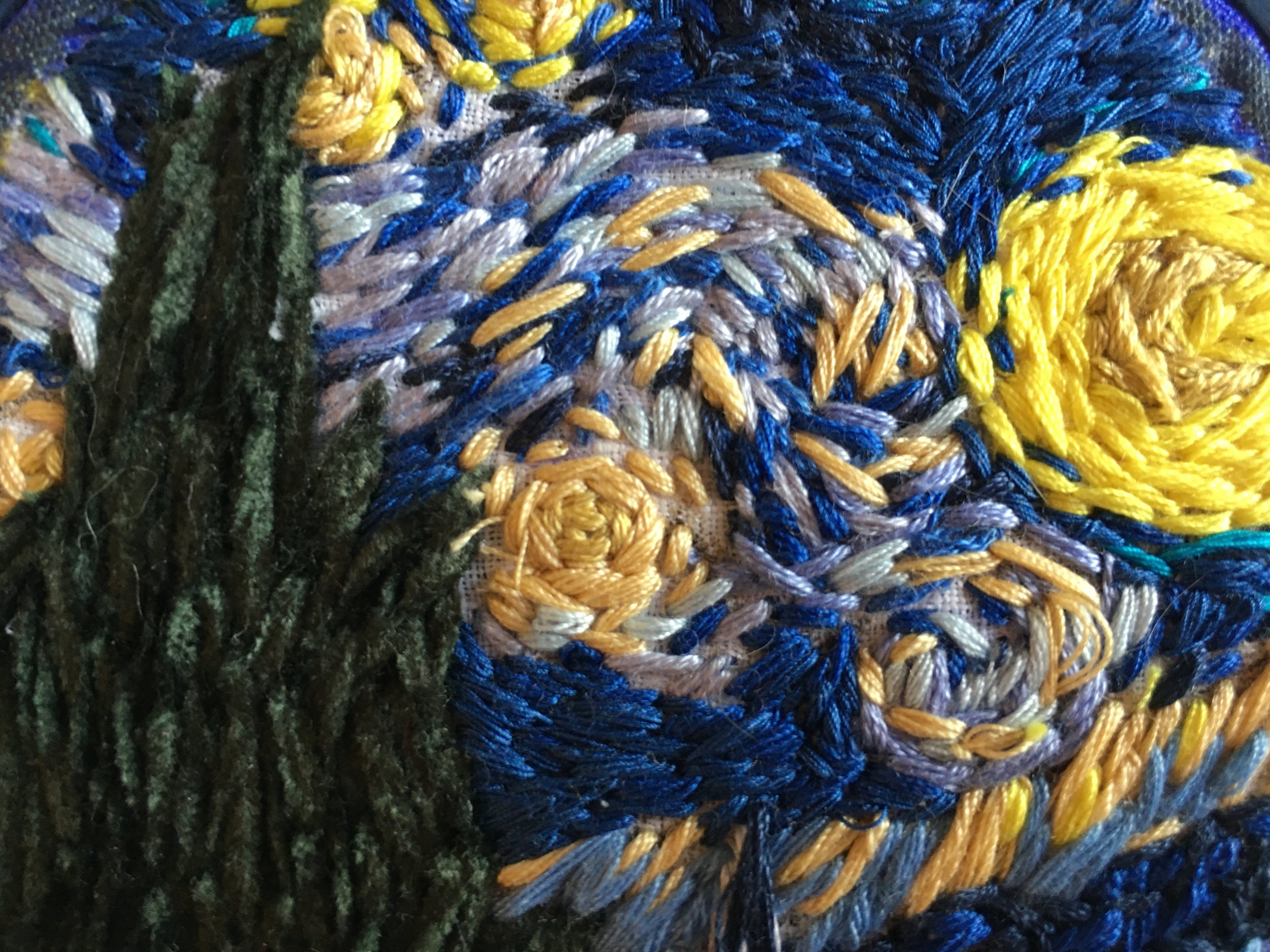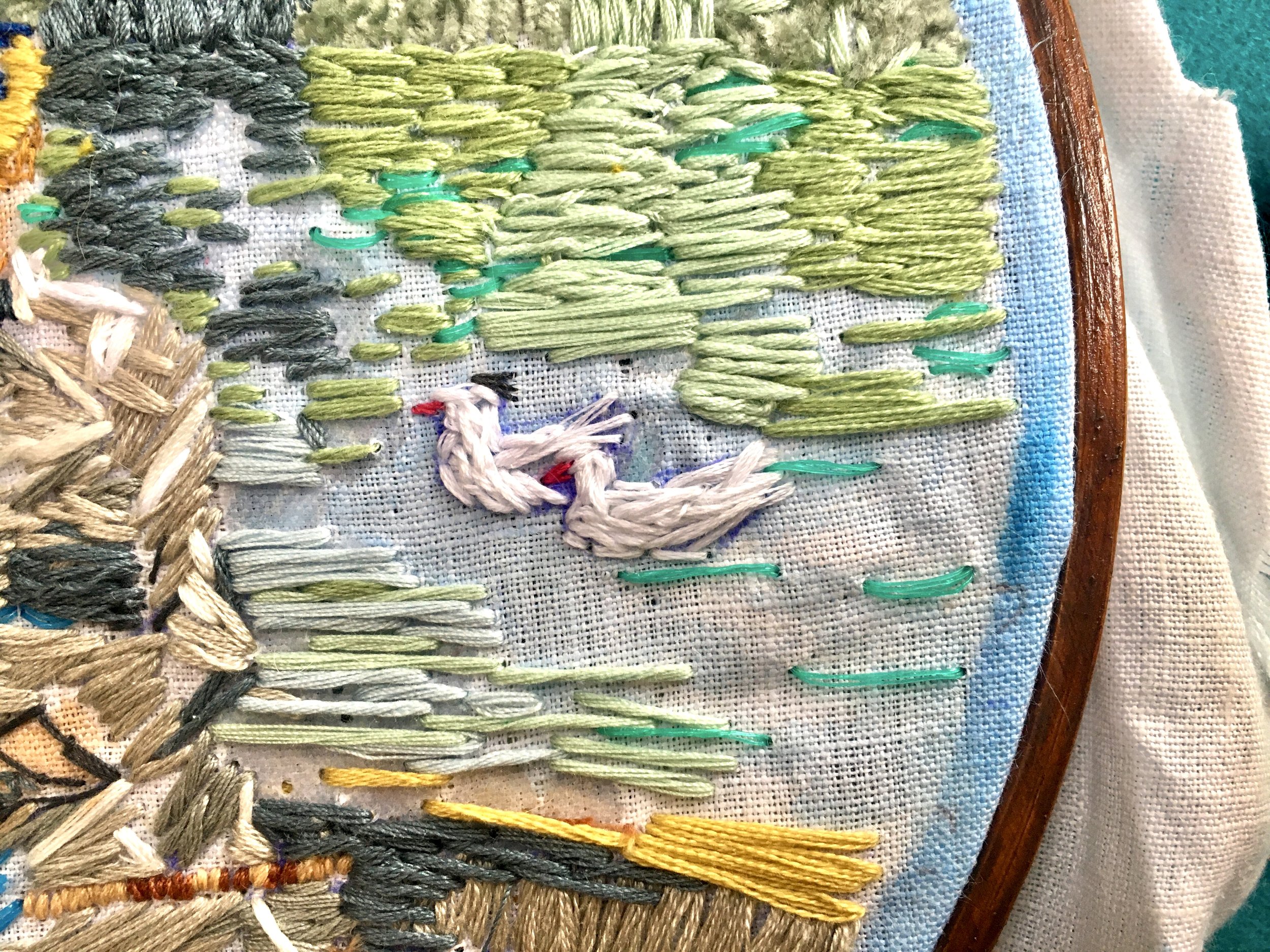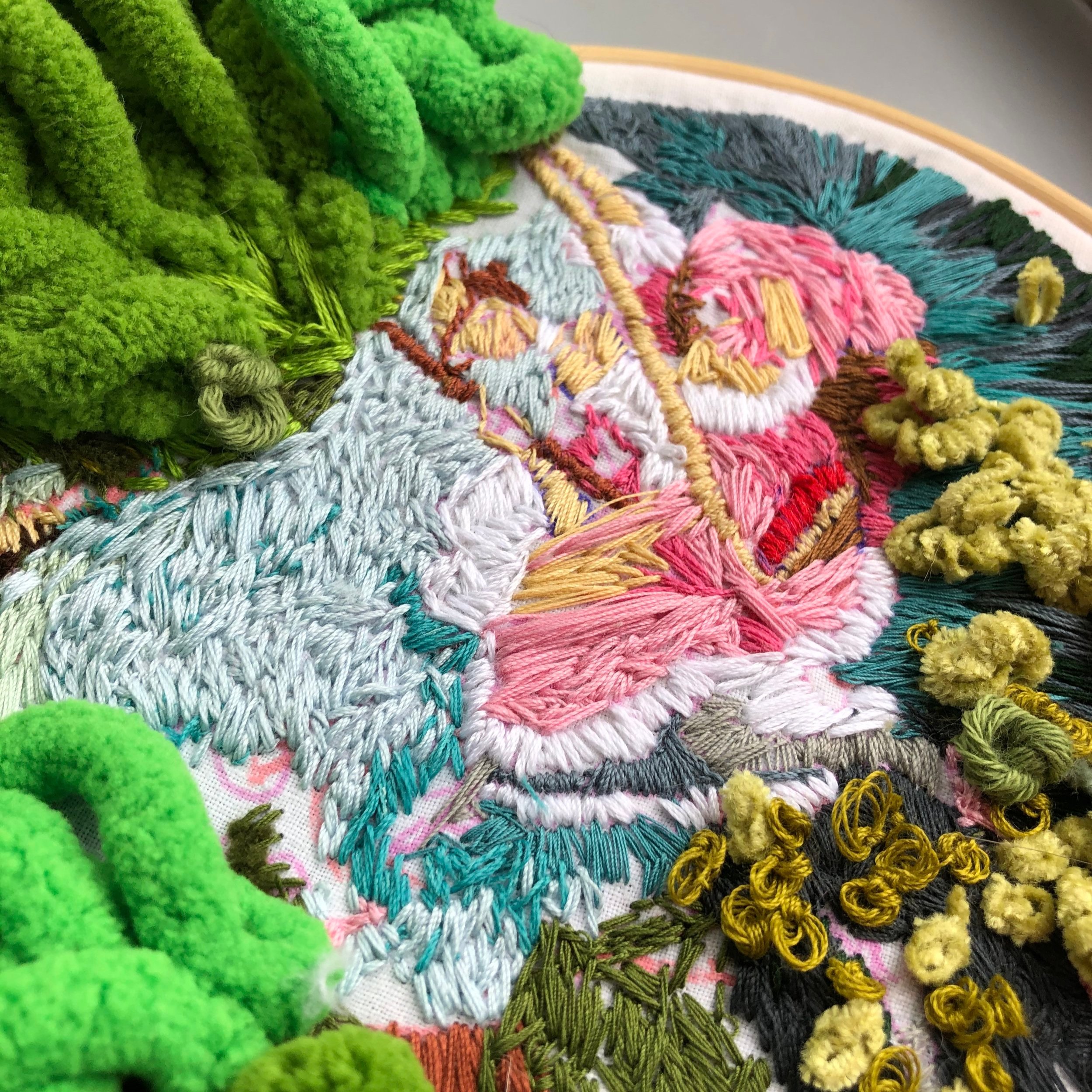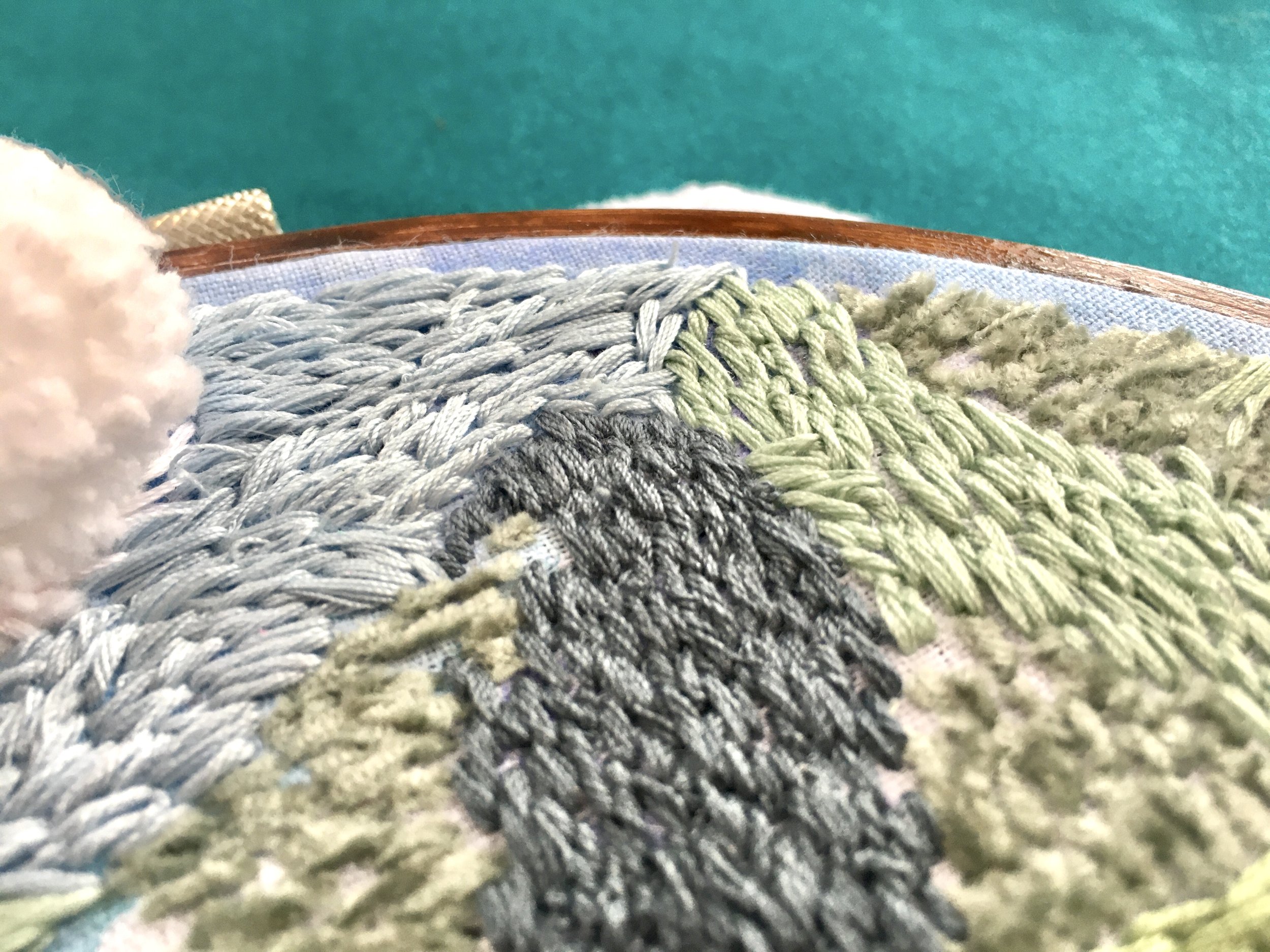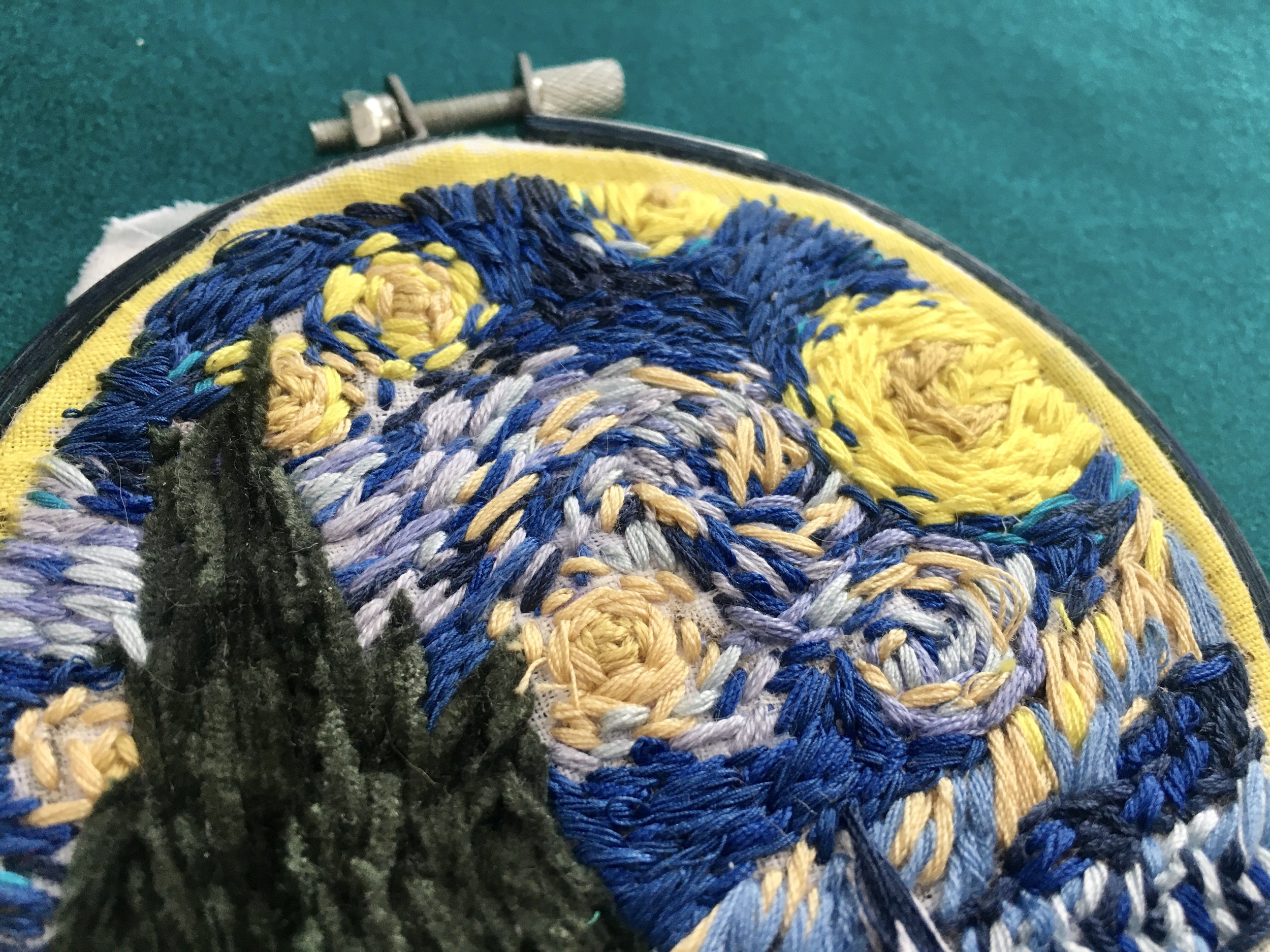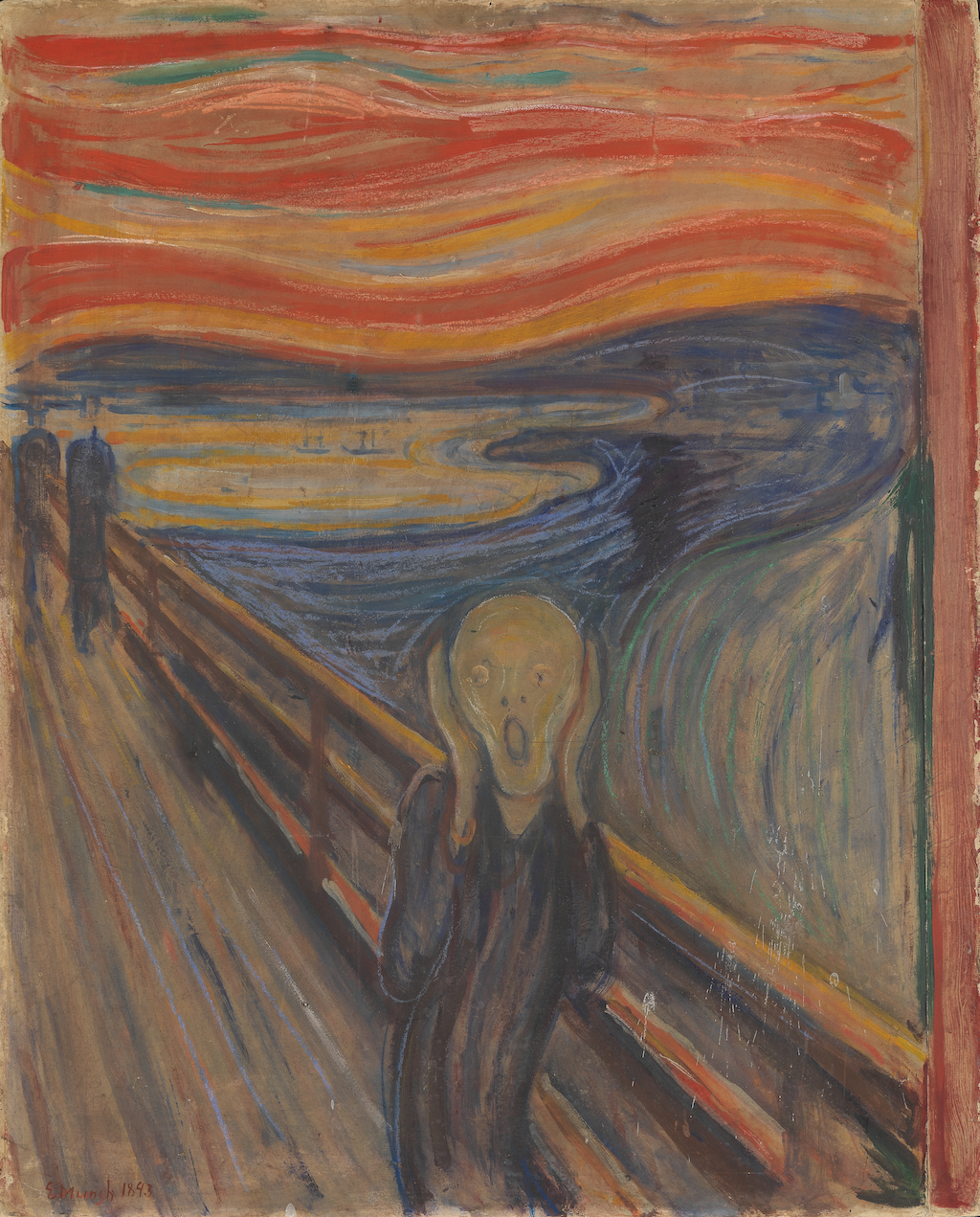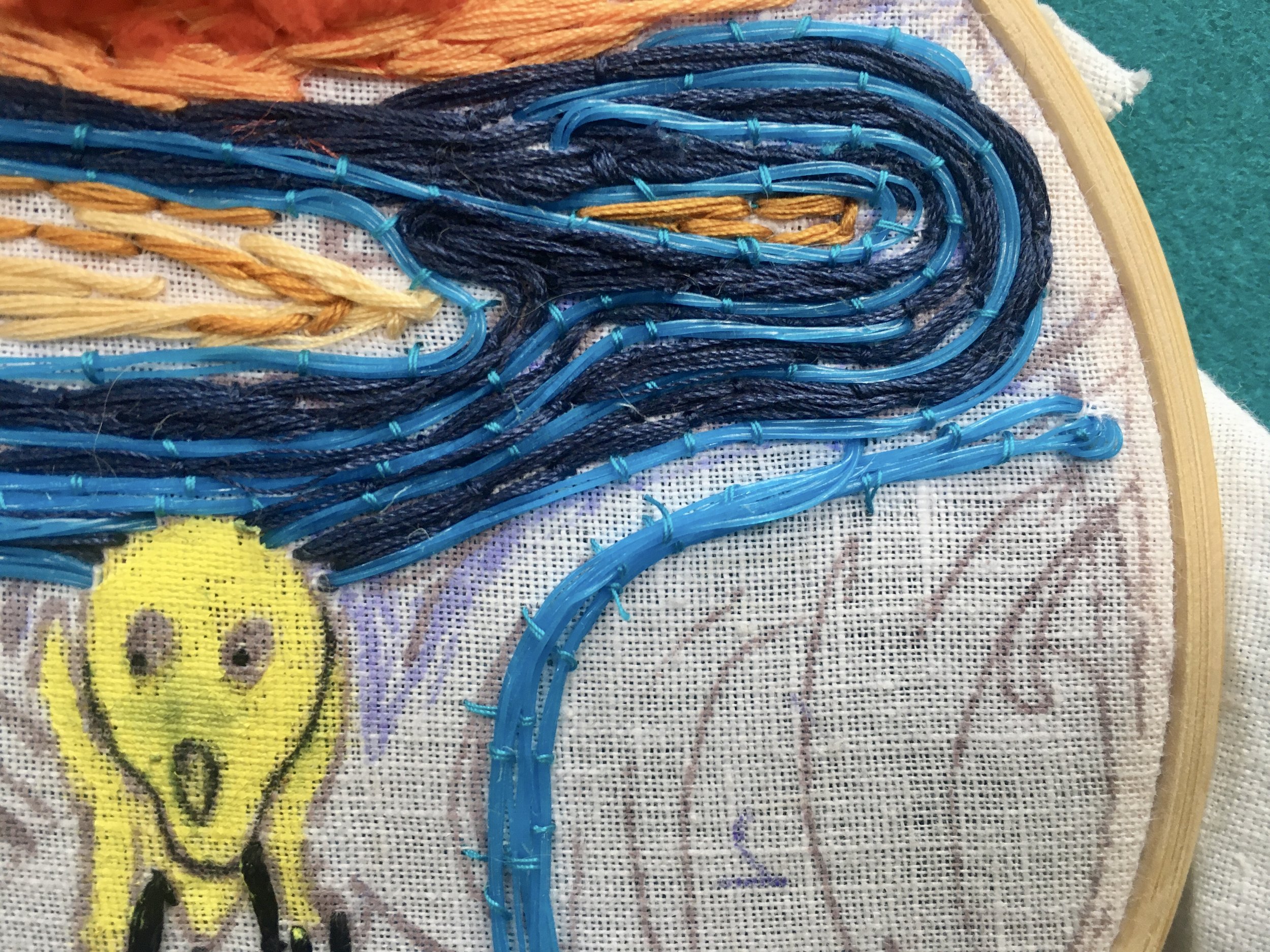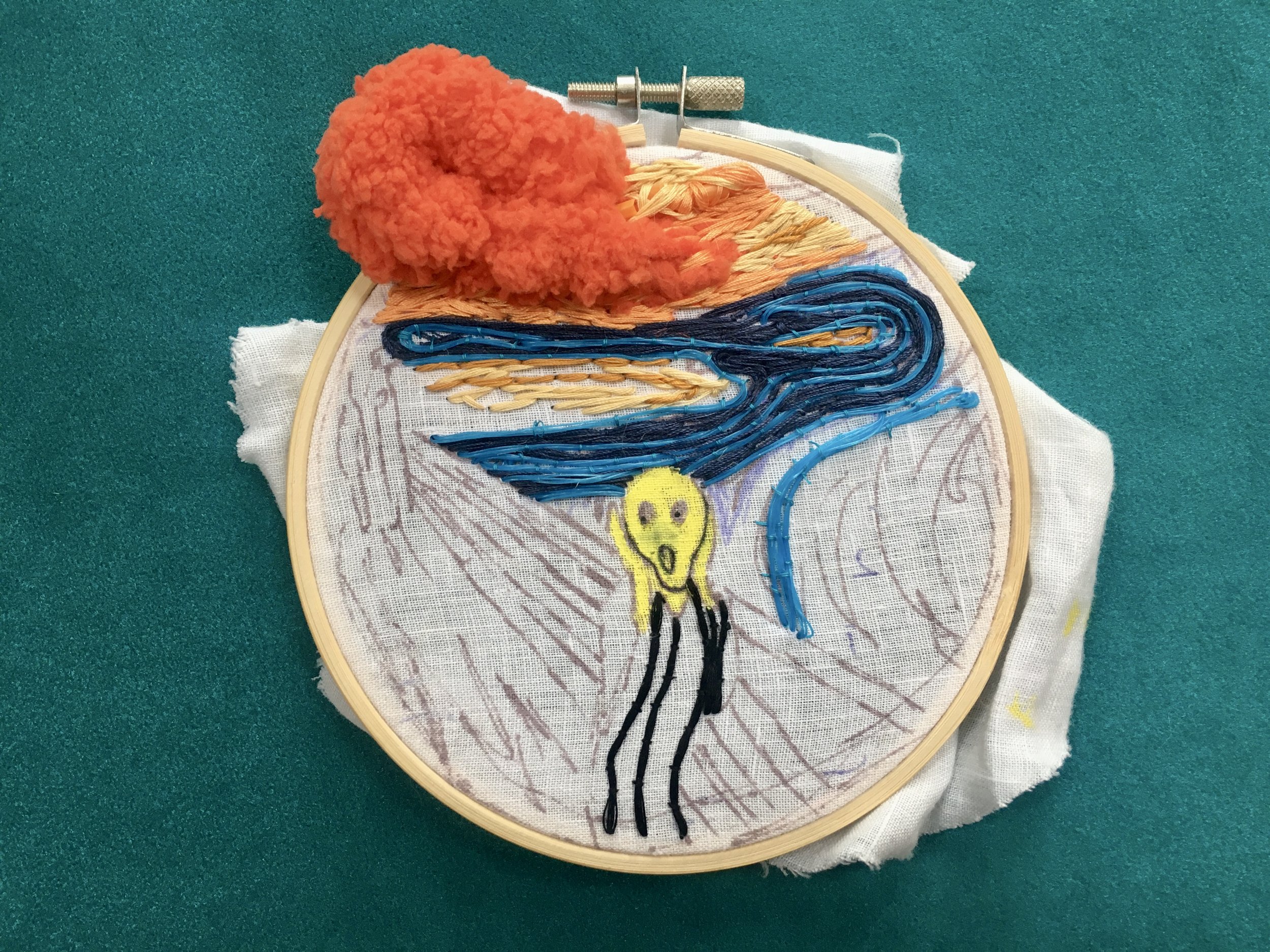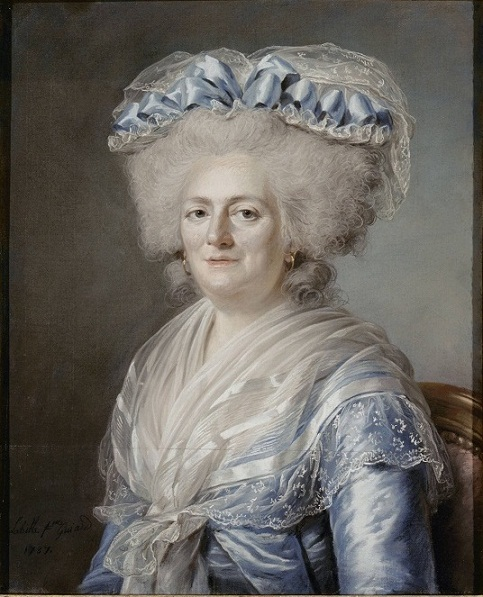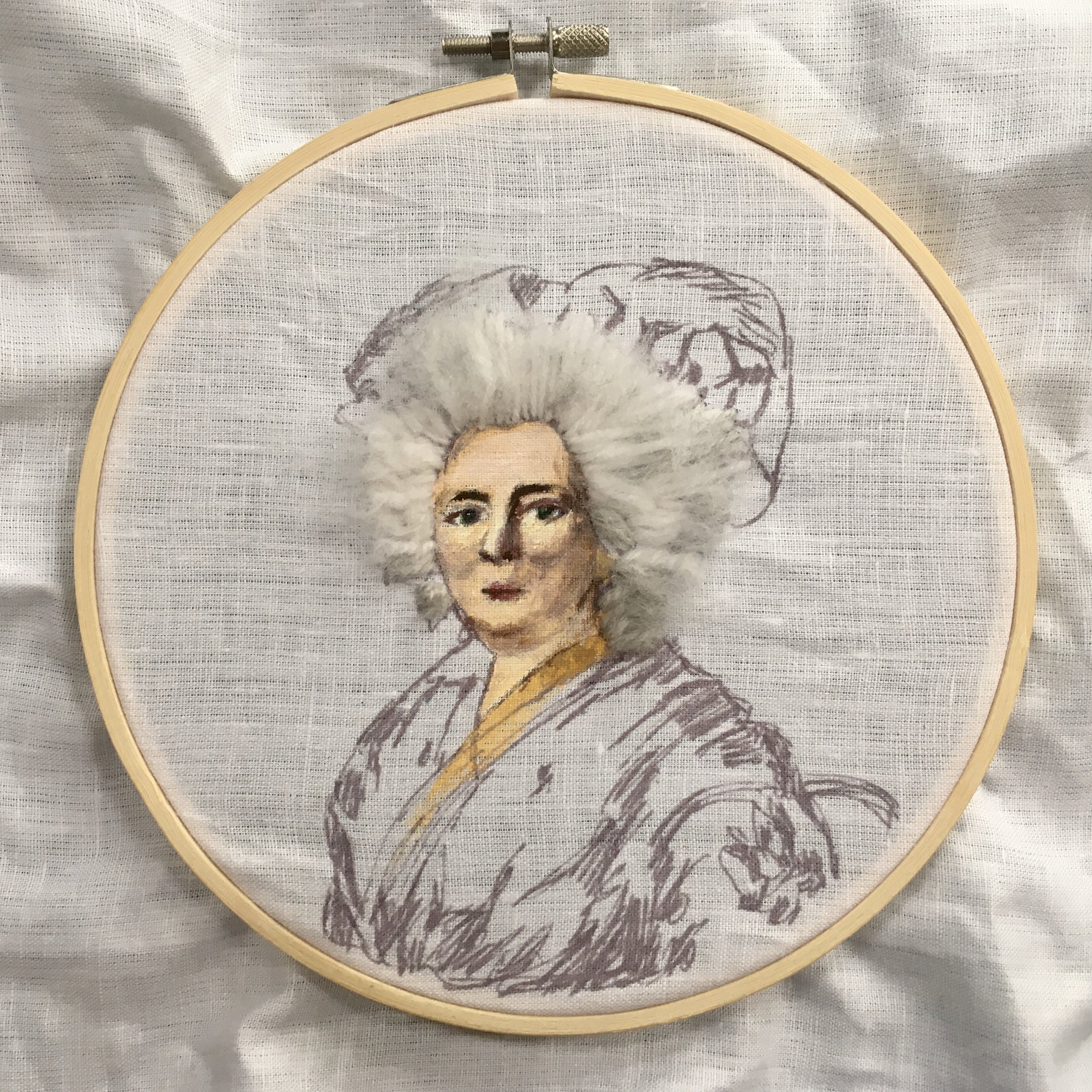Mae'n ddechrau mis Hydref ac mae Penny yng nghamau gorffen ei brodweithiau manwl o baentiadau clasurol. Mae'r cyfnod olaf hwn yn gyfnod dwys mewn unrhyw brosiect creadigol, ac nid yw’r Hen Feistres yn wahanol o gwbl. Mae treulio oriau gyda nodwyddau ac edau wedi rhoi amser i Penny fyfyrio ar sut mae cam cyntaf y prosiect hwn wedi mynd.
Gwers fawr fu symud trefn blaenoriaethau. Roedd llawer o waith recordio a dogfennu i'w wneud ar y dechrau. Mae hyn wedi gadael Penny â swmp o waith creadigol dwys i'w gwblhau yn nes ymlaen, gyda mwy o ymdeimlad o bwysau amser.
Y wers fwyaf fu peidio â cheisio gwneud y gwaith recordio a dogfennu ar y dechrau, ond efallai hyd yn oed treulio'r hanner cyntaf yn gwneud yn unig. Cymerodd amser hir iawn i mi fynd i’m rhythm ... i fynd i mewn i'r rhythm hwnnw a welwch yn y cyfnod dwys o weithio.
Yn hytrach na chychwyn gyda fideos, cyfryngau cymdeithasol ac ati, mae Penny’n teimlo efallai y byddai’n well treulio’r wythnosau cynharach yn canolbwyntio ar y gwneud ei hun, yn mynd i mewn i lif y gwaith creadigol, ac yn dod â’r recordio a’r ddogfennaeth i mewn unwaith y bydd hyn wedi dechrau.
Mae Penny wedi cael trafferth gyda’i meddyginiaeth ADHD drwy gydol y prosiect, sydd wedi amharu ymhellach ar y broses greadigol (diolch byth mae’r feddyginiaeth bellach wedi’i sortio, felly ni ddylai hyn fod yn broblem yng ngham dau!)
Myfyriodd Penny hefyd ar ei hamgylchedd gwaith - yn enwedig yr angen i weithio yng nghwmni eraill. Mae hi wedi arbrofi gyda chymysgedd o weithio ar ei phen ei hun gartref a gweithio mewn gofodau a rennir fel stiwdio gydweithio leol, Gofod Gwneud Machynlleth, ac yng nghartrefi ffrindiau. Mae’r hyn y mae wedi’i ddysgu’n glir iawn: mae bod mewn cwmni cyfeillgar ag eraill yn hanfodol i’w ffocws creadigol ei hun.
Dw i wir angen bod o gwmpas pobl pan fydda i'n gwneud y math yma o waith dwys. Gan weithio ar fy mhen fy hun does gen i ddim y momentwm, does gen i neb i’m helpu gyda thasgau dirdynnol, does gen i ddim y ffocws sydd ei angen arnaf.
Mae Penny bellach wedi ymuno â'r grŵp cydweithio, fel y gall y math hwn o weithio cymdeithasol gael ei strwythuro'n hawdd yn ei hwythnos.
Mae un myfyrdod olaf ar sut mae amseroedd - ac amser - wedi newid ers anterth y pandemig Covid, a sut mae hyn yn effeithio ar ein synnwyr o'r hyn sy'n bosibl:
Ni allaf ddisgwyl gweithio fel y gwnes yn ystod y blynyddoedd pandemig. Mae bywyd yn wahanol nawr, mae mwy o ymyriadau, ni all rhywun gael y dyddiau llawn hynny lle cawsom ni, fel y gwyddoch, ein gorfodi i eistedd ar y soffa! Gallaf barhau i frodio a pharhau â'r prosiect o hyd, ond yn fy marn i, roedd fy nisgwyliadau ychydig yn afrealistig ynghylch faint o ffocws y byddwn yn gallu ei gael.
Er gwaethaf y rhwystrau y mae hi wedi eu hwynebu, mae Penny yn obeithiol am Yr Hen Feistres. Wrth iddi agosáu at gwblhau’r cam cyntaf, mae'n edrych ymlaen at gam dau, ac yn awyddus i fynd â'r hyn a ddysgwyd o'r misoedd cyntaf hyn gyda hi.
A pheidiwch ag anghofio dilyn Penny ar Instagram a TikTok @pennytristram am fwy o ddiweddariadau prosiect!

